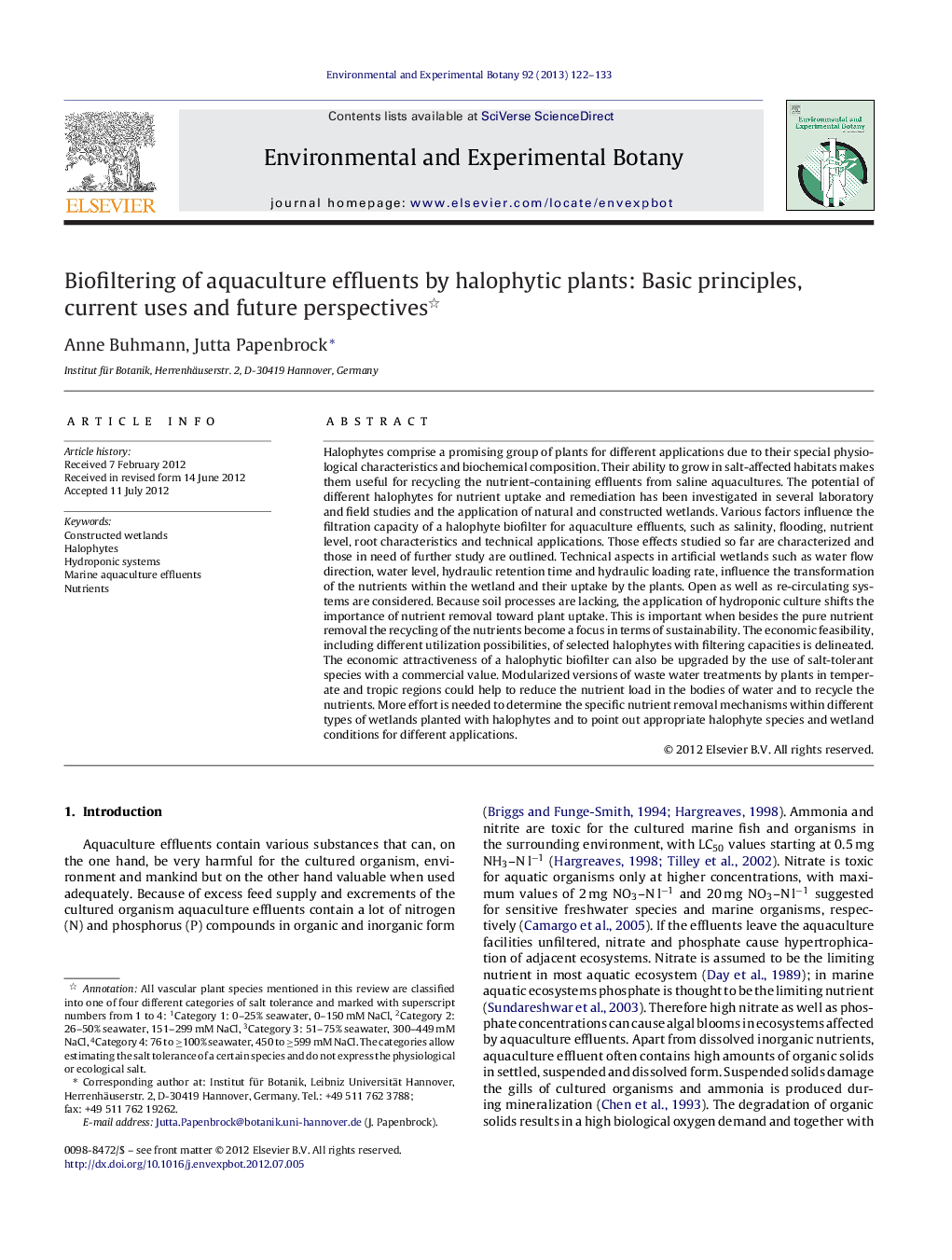| Article ID | Journal | Published Year | Pages | File Type |
|---|---|---|---|---|
| 4554512 | Environmental and Experimental Botany | 2013 | 12 Pages |
Halophytes comprise a promising group of plants for different applications due to their special physiological characteristics and biochemical composition. Their ability to grow in salt-affected habitats makes them useful for recycling the nutrient-containing effluents from saline aquacultures. The potential of different halophytes for nutrient uptake and remediation has been investigated in several laboratory and field studies and the application of natural and constructed wetlands. Various factors influence the filtration capacity of a halophyte biofilter for aquaculture effluents, such as salinity, flooding, nutrient level, root characteristics and technical applications. Those effects studied so far are characterized and those in need of further study are outlined. Technical aspects in artificial wetlands such as water flow direction, water level, hydraulic retention time and hydraulic loading rate, influence the transformation of the nutrients within the wetland and their uptake by the plants. Open as well as re-circulating systems are considered. Because soil processes are lacking, the application of hydroponic culture shifts the importance of nutrient removal toward plant uptake. This is important when besides the pure nutrient removal the recycling of the nutrients become a focus in terms of sustainability. The economic feasibility, including different utilization possibilities, of selected halophytes with filtering capacities is delineated. The economic attractiveness of a halophytic biofilter can also be upgraded by the use of salt-tolerant species with a commercial value. Modularized versions of waste water treatments by plants in temperate and tropic regions could help to reduce the nutrient load in the bodies of water and to recycle the nutrients. More effort is needed to determine the specific nutrient removal mechanisms within different types of wetlands planted with halophytes and to point out appropriate halophyte species and wetland conditions for different applications.
Graphical abstractPurification of aquaculture effluents by halophytes in a re-circulating system.Figure optionsDownload full-size imageDownload as PowerPoint slideHighlights► Aquaculture effluents contain plant-accessible nitrogen and phosphate. ► Microorganisms and plants contribute to biofiltration in open and recirculating systems. ► Marine constructed wetlands provide a habitat for halophytes and associated microorganisms. ► Engineers and biologists need to cooperate in optimization of biofiltering systems. ► Wetlands and hydroponics have a high potential to recycle nutrients effectively.
